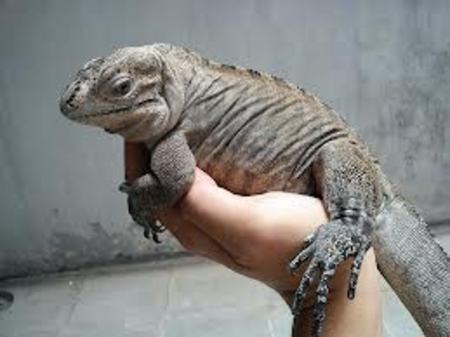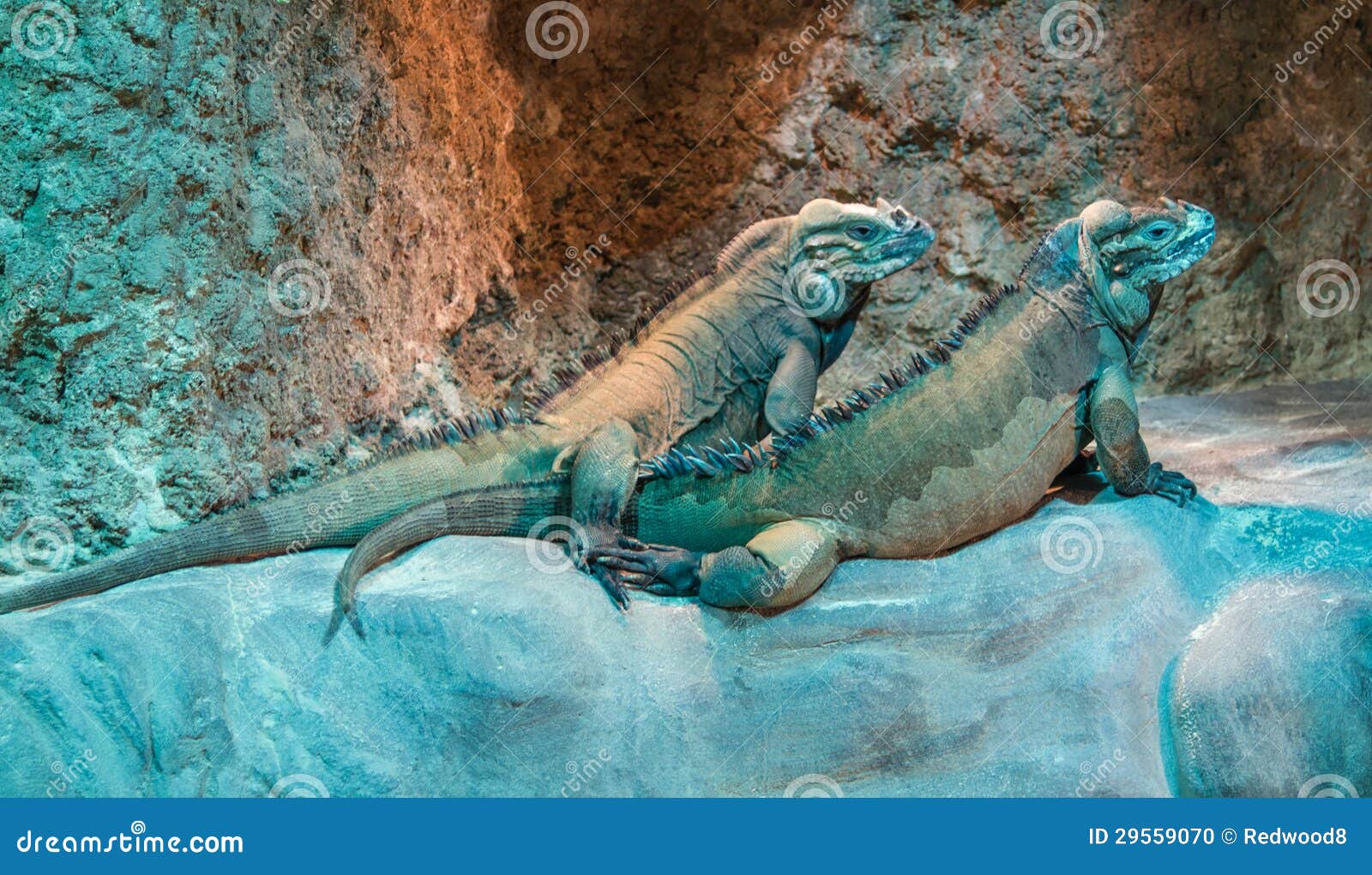

It is a diurnal animal, sleeping in "retreats" during the nights.

The Haitian population is found on a small karst limestone terrace near the coast. It is found at altitudes from 43m below sea level (Cabritos Island on Lake Enriquillo) up to 439m.

Another part of the population inhabits a flat habitat with a 5–6m tall dry forest, dominated by succulents growing on white sandy soil. This species inhabits dry xeric Hispaniolan dry forests or scrublands with scattered trees, cacti and many vines, that grow on rocky limestone cliffs and terraces, with the occasional depressions filled with red soil. ricordii evolved on the northern island and later dispersed southwards, while C. Hispaniola was once two islands genetic evidence indicates C. In 2008, a third population was found to exist near the town of Anse-a-Pitres in Haiti, near the southernmost coast. All other Caribbean islands with rock iguanas are home to a single species. It is sympatric throughout its range with C. Past drier Pleistocene climates may have allowed genetic exchange between the two populations. These are separated by the moister Sierra de Bahoruco, with three peaks exceeding 2,000 metres (6,600 ft) which form an ecological barrier between two populations. Until 2008, Cyclura ricordii was thought to be restricted to two populations in the southern Dominican Republic: one population in the arid Hoya de Enriquillo surrounding the hypersaline Lake Enriquillo and its lake island Isla Cabritos, and the other in the most xeric portion of the coastal lowlands of Pedernales Province. Įggs from the genus Cyclura are some of the largest laid by any lizard. Species of Cyclura are sexually dimorphic males are larger than females, and have larger femoral pores on their thighs, which are used to release pheromones. The eyes have a dark, almost black iris and red sclera. In adults, the dark chevrons are less contrasting than in juveniles. Their body color is a grayish green flat color marked by five to six bold pale gray chevrons alternating with dark gray to black chevrons. The average snout-to-vent length at birth is 96 mm (3.8 in) with a 147 mm (5.8 in) tail. Description Ĭyclura ricordii is a species of rock iguana with a maximum snout-to-vent length in males of 460 mm (18 in), in females to 430 mm (17 in), The tail is 540 mm (21 in) long at maximum. In French, the names cyclure d'Hispaniola, cyclures de Ricord and iguane de Ricord are recorded. In the local Haitian Creole, it is known as leza recò. Vernacular names in Spanish include iguana amarilla and iguana de Ricord. ricordii include Ricord's rock iguana, Ricord's ground iguana, Ricord's iguana, and banded rock iguana. carinata of the Turks and Caicos Islands. Genetic ( mtDNA) and morphological data indicate that the closest living relative of C. The holotype is a stuffed animal sent by Ricord from the colony of Saint-Domingue to Paris, which arrived at the Muséum national d'histoire naturelle in 1699, and is stored there under the collection number MNHN-RA-0.8304.

ricordi, this orthographic error was subsequently followed by most authors and databases, until the 2010s. ricordii, but in 1975 Albert Schwartz and Richard Thomas misspelled the name as C. In 1924, the species was assigned to the genus Cyclura by Doris Mable Cochran. In 1885, the species was returned to the genus Aloponotus by Edward Drinker Cope. In 1843, the species was assigned to the genus Hypsilophus by Leopold Fitzinger. In 1837 Cyclura ricordii was described as a species new to science by André Marie Constant Duméril and Gabriel Bibron, who at that time named it Aloponotus ricordii. The specific epithet ricordii commemorates the French doctor Alexandre Ricord who sent the first specimen to Paris. It is threatened by predation by introduced predators and habitat loss, due to overgrazing and charcoal manufacture. The natural habitats of its three subpopulations are hot, dry, wooded savanna on limestone with access to soil and sandy flats in southern Hispaniola. cornuta cornuta) the two species are the only taxa of rock iguana to do so. It is known to coexist with the nominate subspecies of the rhinoceros iguana ( C. It is endemic to the island of Hispaniola (in both Haiti and the Dominican Republic). Thomas, 1975, lapsusĬyclura ricordii, also known as Ricord's ground iguana or Ricord's rock iguana, is an endangered species of medium-sized rock iguana, a large herbivorous lizard.


 0 kommentar(er)
0 kommentar(er)
